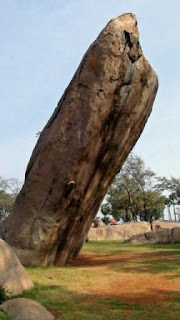Talakad (also known as Talakadu) is a desert-like town on the left bank of the Kaveri river at a spot where the river makes a sharp bend. It is 45 km from Mysore and 133 km from Bangalore in Karnataka, India. A historic site, Talakad once had over 30 temples that today are buried in sand. Now it is a scenic and spiritual pilgrimage centre. Here the eastward flowing Kaveri river changes course and seems magnificently vast as here the sand on its banks spreads over a wide area.
Talakad is also tagged to the curse called “Curse of Talakad” by Alamelamma on the Wodeyar dynasty (erstwhile Maharajas) of Mysore.
I started around 6.30 am from and picked up Achin at his place on Kanakapura road. Drove on Kanakapura road via Kanakapura, Melvelli to reach Talakkadu--about 140 kms. the town has been developed now and there is more infrastructure available this time around compared to the last time i visited in 2003.
The temples have also been surrounded by walls and there is renovation work going on. the expanse of sand is huge now and we hired a guide and paid 70 rupees to him to show us the five temples or panchlingas as they call them here. had a quick breakfast of 2 fulkas and a tomato sabzi from a local dhaba..not much variety available...
The return journey started around 12 noon and we kind of lost our way and backtracked and then went via Melvelli-->Maddur, Mysore road to Bangalore. We stopped at the Adigas on the Mysore road and had lunch around 2.30 pm. started after lunch at 3pm and made our way back quickly to bangalore via the Nice road, dropping Achin at his house on Kanakapura road. Did 307.6 Kms overall from door to door. Great day trip. There is a resort also in Talakad where one can stay overnight and decent accomodation is provided.













